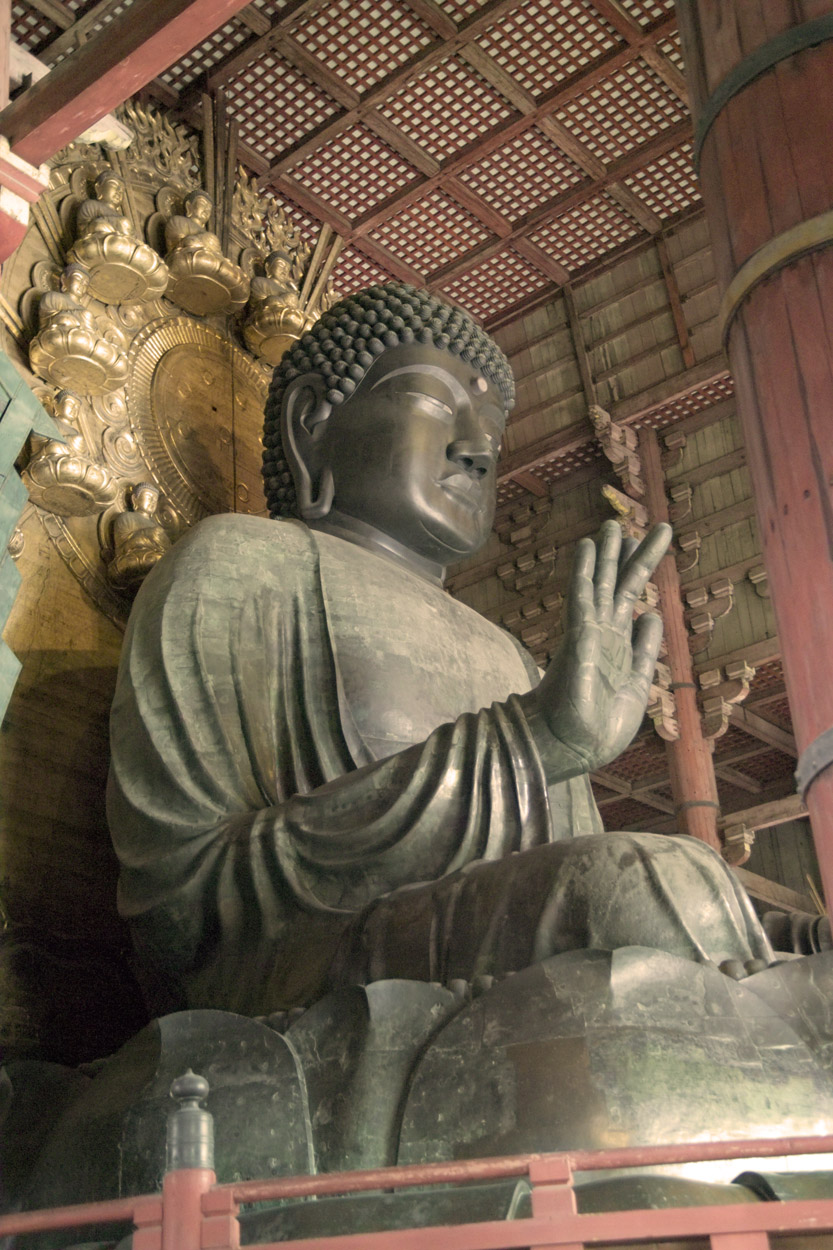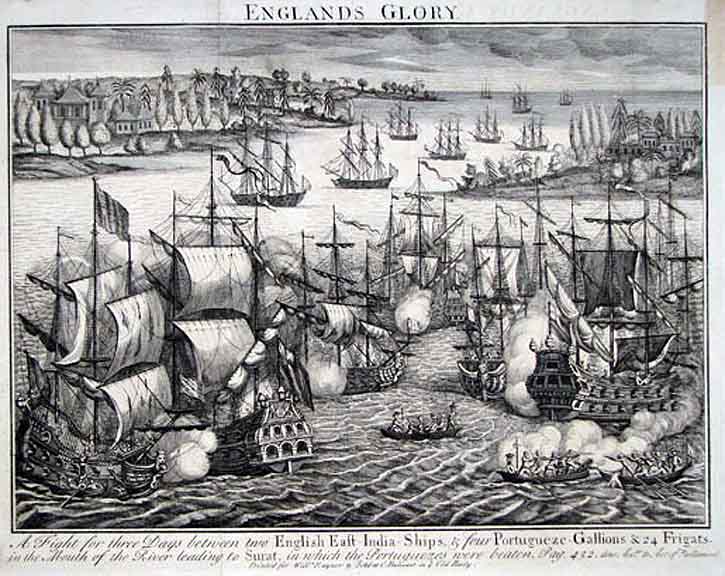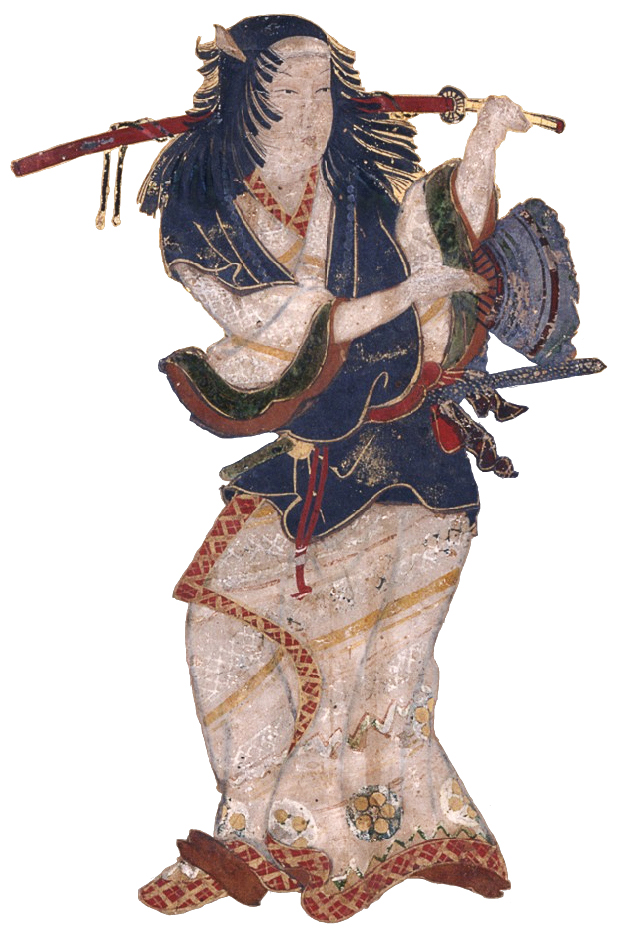|
Tenjiku Tokubei
Tenjiku Tokubei (1612 - c. 1692) (Japanese: 天竺徳兵衛) was a Japanese adventurer and writer of the early 17th century. He traveled to Southeast and South Asia, hence his "Tenjiku" (Japanese: 天竺, East Asian name of "India") nickname. He was born in Sendo-machi, Takasago-cho, in today's Hyōgo Prefecture in 1612. His father was a salt wholesaler. The adventurer At the age of fifteen, in 1626, Tokubei was hired by a trading company in Kyoto. He pursued commercial activities aboard Japanese red seal ships. In 1627, Tokubei visited China, Vietnam, and Siam (modern Thailand) on board a Japanese Red Seal ship. He would stay for some time in Siam and again visit the country on board one of the ships of the Dutch adventurer Jan Joosten van Lodensteijn. He also sailed to India, to the source of the Ganges, and the country of Magadha, and returned with great wealth and numerous stories to tell.Kabuki; the Popular Stage of Japan - Page 187 by Zoë Kincaid 1965 "Tokubei sailed ... [...More Info...] [...Related Items...] OR: [Wikipedia] [Google] [Baidu] |
Ganges
The Ganges ( ; in India: Ganga, ; in Bangladesh: Padma, ). "The Ganges Basin, known in India as the Ganga and in Bangladesh as the Padma, is an international which goes through India, Bangladesh, Nepal and China." is a trans-boundary river of Asia which flows through India and Bangladesh. The river rises in the western Himalayas in the States and union territories of India, Indian state of Uttarakhand. It flows south and east through the Gangetic Plain, Gangetic plain of North India, receiving the right-bank tributary, the Yamuna, which also rises in the western Indian Himalayas, and several left-bank tributaries from Nepal that account for the bulk of its flow. In West Bengal state, India, a feeder canal taking off from its right bank diverts 50% of its flow southwards, artificially connecting it to the Hooghly River. The Ganges continues into Bangladesh, its name changing to the Padma River, Padma. It is then joined by the Jamuna River (Bangladesh), Jamuna, the lower str ... [...More Info...] [...Related Items...] OR: [Wikipedia] [Google] [Baidu] |
India–Japan Relations
Relations between the Republic of India and Japan have traditionally been strong. The people of India and Japan have engaged in cultural exchanges since ancient times. They are guided by common cultural traditions, including the shared heritage of Buddhism, and share a strong commitment to the ideals of democracy, tolerance, pluralism, and open societies. India and Japan have a high degree of congruence of political, economic, and strategic interests. They view each other as partners that have responsibility for and are capable of responding to global and regional challenges. India is the largest recipient of Japanese aid, and both countries have a special relationship of official development assistance (ODA). As of 2017, bilateral trade between India and Japan stood at US$17.63 billion. During World War II, Britain, of which at the time India was a part, declared war on the Axis powers, leading to the recruitment of Indian soldiers to fight the Japanese army in the Eas ... [...More Info...] [...Related Items...] OR: [Wikipedia] [Google] [Baidu] |
1690s Deaths
Year 169 ( CLXIX) was a common year starting on Saturday of the Julian calendar. At the time, it was known as the Year of the Consulship of Senecio and Apollinaris (or, less frequently, year 922 ''Ab urbe condita''). The denomination 169 for this year has been used since the early medieval period, when the Anno Domini calendar era became the prevalent method in Europe for naming years. Events By place Roman Empire * Marcomannic Wars: Germanic tribes invade the frontiers of the Roman Empire, specifically the provinces of Raetia and Moesia. * Northern African Moors invade what is now Spain. * Marcus Aurelius becomes sole Roman Emperor upon the death of Lucius Verus. * Marcus Aurelius forces his daughter Lucilla into marriage with Claudius Pompeianus. * Galen moves back to Rome for good. China * Confucian scholars who had denounced the court eunuchs are arrested, killed or banished from the capital of Luoyang and official life during the second episode of the Disasters ... [...More Info...] [...Related Items...] OR: [Wikipedia] [Google] [Baidu] |
1612 Births
Events January–March * January 6 – Axel Oxenstierna becomes Lord High Chancellor of Sweden. He persuades the Riksdag of the Estates to grant the Swedish nobility the right and privilege to hold all higher offices of government. * January 10 – Gustavus Adolphus replies to Metropolitan Isidor, Odoevskij and the estates of Veliky Novgorod, Novgorod, stating that he himself wishes to assume responsibility for the government of Novgorod and also of all Russians. A number of land grants signed the same day show that the Swedish king has assumed the title of Tsar. * January 20 **Rudolf II, Holy Roman Emperor, dies and several candidates vie to succeed him, with Archduke Matthias eventually being elected. ** An uprising led by Dmitry Pozharsky begins in Moscow against occupying Polish troops. * February 11 – Battle of Vittsjö: King Gustavus Adolphus of Sweden and 3,000 of his troops are forced to retreat from Denmark. The 17-year old king almost drown ... [...More Info...] [...Related Items...] OR: [Wikipedia] [Google] [Baidu] |
17th-century Travelers
The 17th century lasted from January 1, 1601 (represented by the Roman numerals MDCI), to December 31, 1700 (MDCC). It falls into the early modern period of Europe and in that continent (whose impact on the world was increasing) was characterized by the Baroque cultural movement, the latter part of the Spanish Golden Age, the Dutch Golden Age, the French ''Grand Siècle'' dominated by Louis XIV, the Scientific Revolution, the world's first public company and megacorporation known as the Dutch East India Company, and according to some historians, the General Crisis. From the mid-17th century, European politics were increasingly dominated by the Kingdom of France of Louis XIV, where royal power was solidified domestically in the civil war of the Fronde. The semi-feudal territorial French nobility was weakened and subjugated to the power of an absolute monarchy through the reinvention of the Palace of Versailles from a hunting lodge to a gilded prison, in which a greatly expanded r ... [...More Info...] [...Related Items...] OR: [Wikipedia] [Google] [Baidu] |
Japanese Explorers
Japanese may refer to: * Something from or related to Japan, an island country in East Asia * Japanese language, spoken mainly in Japan * Japanese people, the ethnic group that identifies with Japan through ancestry or culture ** Japanese diaspora, Japanese emigrants and their descendants around the world * Japanese citizens, nationals of Japan under Japanese nationality law ** Foreign-born Japanese, naturalized citizens of Japan * Japanese writing system, consisting of kanji and kana * Japanese cuisine, the food and food culture of Japan See also * List of Japanese people * * Japonica (other) * Japanese studies , sometimes known as Japanology in Europe, is a sub-field of area studies or East Asian studies involved in social sciences and humanities research on Japan. It incorporates fields such as the study of Japanese language, history, culture, litera ... {{disambiguation Language and nationality disambiguation pages ... [...More Info...] [...Related Items...] OR: [Wikipedia] [Google] [Baidu] |
Jōruri (music)
is a form of traditional Japanese narrative music in which a sings to the accompaniment of a . accompanies , traditional Japanese puppet theater. As a form of storytelling, emphasizes the lyrics and narration rather than the music itself. History According to Asai Ryōi, the first performer to have ever employed the during his storytelling, instead of the biwa, was chanter Sawazumi. The story he narrated was , one of the many existing versions of the , which tells the tale of the tragic love between Minamoto no Yoshitsune was a commander of the Minamoto clan of Japan in the late Heian period, Heian and early Kamakura period, Kamakura periods. During the Genpei War, he led a series of battles that toppled the Ise-Heishi branch of the Taira clan, helping his half-br ... and Jōruri-hime. Following this event, every tale sung to the accompaniment of a became emblematic of the style. See also * ' References Japanese styles of music Japanese traditional music ... [...More Info...] [...Related Items...] OR: [Wikipedia] [Google] [Baidu] |
Kabuki
is a classical form of Theatre of Japan, Japanese theatre, mixing dramatic performance with Japanese traditional dance, traditional dance. Kabuki theatre is known for its heavily stylised performances, its glamorous, highly decorated costumes, and for the elaborate make-up worn by some of its performers. Kabuki is thought to have originated in the early Edo period, when the art's founder, Izumo no Okuni, formed a female dance troupe that performed dances and light sketches in Kyoto. The art form later developed into its present all-male theatrical form after women were banned from performing in kabuki theatre in 1629. Kabuki developed throughout the late 17th century and reached its zenith in the mid-18th century. In 2005, kabuki theatre was proclaimed by UNESCO as an intangible heritage possessing outstanding universal value. In 2008, it was inscribed in the UNESCO Intangible Cultural Heritage Lists, UNESCO Representative List of the Intangible Cultural Heritage of Humanity ... [...More Info...] [...Related Items...] OR: [Wikipedia] [Google] [Baidu] |
Sakoku
is the most common name for the isolationist foreign policy of the Japanese Tokugawa shogunate under which, during the Edo period (from 1603 to 1868), relations and trade between Japan and other countries were severely limited, and almost all foreign nationals were banned from entering Japan, while common Japanese people were kept from leaving the country. The policy was enacted by the shogunate government ('' bakufu'') under Tokugawa Iemitsu through a number of edicts and policies from 1633 to 1639. The term originates from the manuscript work written by Japanese astronomer and translator Shizuki Tadao in 1801. Shizuki invented the word while translating the works of the 17th-century German traveller Engelbert Kaempfer namely, his book, 'the history of Japan', posthumously released in 1727. Japan was not completely isolated under the policy. was a system in which strict regulations were placed on commerce and foreign relations by the shogunate and certain feudal domains ... [...More Info...] [...Related Items...] OR: [Wikipedia] [Google] [Baidu] |





